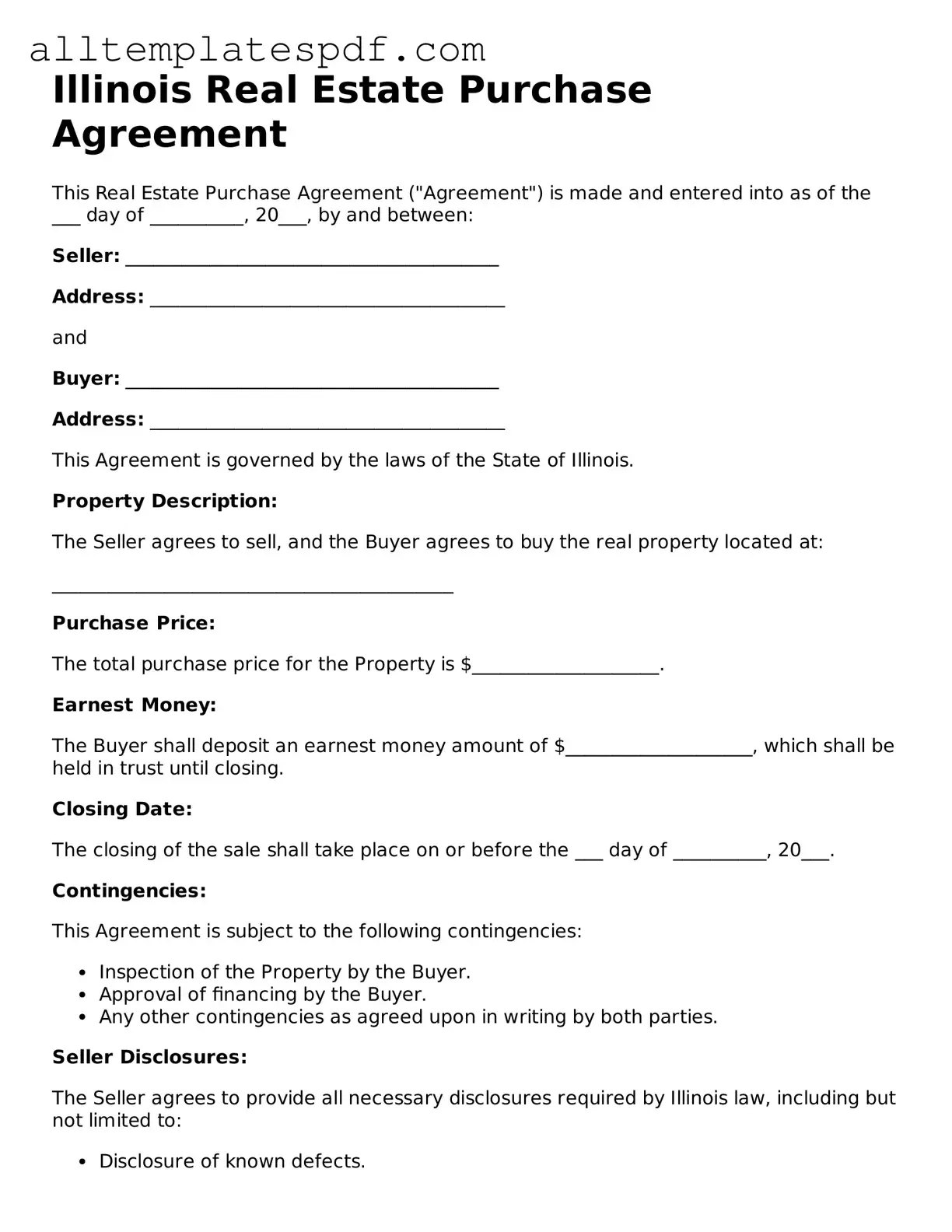Filling out the Illinois Real Estate Purchase Agreement form can be a daunting task, especially for first-time buyers or sellers. One common mistake people make is not providing accurate property descriptions. The property description should be clear and specific, including the address and any relevant details that distinguish the property. Omitting this information can lead to confusion and potential legal issues down the line.
Another frequent error involves overlooking contingencies. Buyers often forget to include important contingencies, such as financing or inspection contingencies. These clauses protect buyers by allowing them to back out of the agreement if certain conditions are not met. Without these safeguards, buyers may find themselves in precarious situations.
Many individuals also neglect to specify the closing date. This detail is crucial, as it sets the timeline for the transaction. If the closing date is left blank or not clearly defined, it can lead to misunderstandings and delays, frustrating all parties involved.
People sometimes rush through the financial details, leading to mistakes in the earnest money deposit amount. This deposit shows the seller that the buyer is serious about the purchase. If the amount is incorrect or not clearly stated, it can create issues during negotiations and may even jeopardize the sale.
Another mistake is failing to include all necessary parties in the agreement. It is essential to list everyone involved in the transaction, including co-buyers or co-sellers. Omitting a party can result in complications later, especially if that individual has a legal interest in the property.
Buyers and sellers may also overlook the importance of understanding the terms of the agreement. Not fully comprehending the implications of various clauses can lead to unintended consequences. It’s vital to read through the entire document and seek clarification on any points that are unclear.
Lastly, many individuals forget to sign and date the agreement. While this may seem like a simple oversight, an unsigned document is not legally binding. Both parties must provide their signatures to ensure that the agreement is enforceable. Taking the time to review and finalize the document can save a lot of trouble later.
